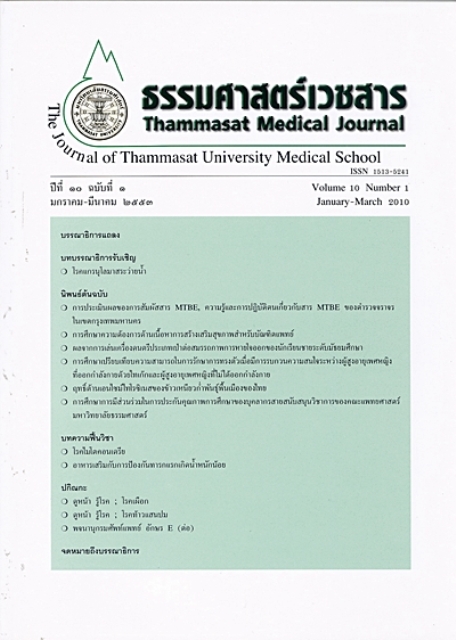Comparison of balance control in distracting conditions between older women in the Tai Chi group and non Tai-Chi group
Keywords:
Older, Balance, Attention, Tai ChiAbstract
Background: Balance control is an important ability to control and maintain upright stance during movement.The loss or decline of this ability is a common problem during the process of aging. Attentionis one factor in balance control but this also decreases in older adults. Human movements indaily living are mostly dual tasks such as talking to another person while standing. When weperformed one activity, the attention to another activity was distracted. Many studies found thatbalance impairment and reduced attention capacity were associated with falling in older adults.Tai Chi is an exercise that is appropriate for maintaining balance in older people. Many studiesshowed that Tai chi exercise could improve balance control in elderly. However, no previousstudies have investigated the effect of Tai Chi on balance control in distracted attention situation.
Objective: To compare the differences in balance control during walking with and without a cognitivedistraction task between the Tai Chi group and the Non-Tai Chi group among older women.
Method: Fifty elderly women aged between 50-70 years were enrolled in this study. The participants weredivided into two groups. The experimental group consisted of 25 elderly who practiced Tai Chi.The control group was 25 elderly who did not exercise. All participants met the inclusion criteria.The participants were assessed for cognition capacity using the TMSE test. Then, they were askedto perform 20 m.-walking task in 3 situations: walking at their self-selected walking speed;walking and subtracting by 7 from 100; and walking while counting the name of 12 monthsbackward. Walking time in each walking situation was recorded and this was referred to balancecontrol in this study. Data were analyzed using the SPSS program version 16. The independentsample t-test and Friedman test were used to assess differences in balance control between groups.
Results: The results showed that there was statistically significant difference between groups in walkingtime in the walking at self-selected walking speed condition (p = 0.04). In addition, there weresignificant differences in walking while subtracting 7 from 100 (p = 0.03) and walking whilesaying the name of 12 months backward (p = 0.006). The results indicated that balance controlwas different between older women in the Tai Chi group and the Non-Tai Chi group whenperforming the cognitive task during walking.
Conclusion: Tai Chi exercise improved balance control while walking with attention distraction. In the dailylife, people always do more than one activity at a time. From this situation, balance controlbecomes more difficult for elderly. Therefore, Tai Chi may be an effective exercise that enhancesbalance control while walking with attention distraction and helps reducing the risks of fallingin elderly people.
Key words: Older, Balance, Attention, Tai Chi


